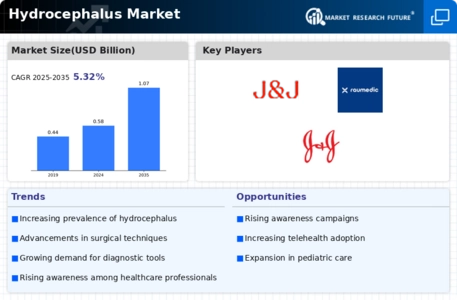Market Trends
Key Emerging Trends in the Hydrocephalus Market
Hydrocephalus, a condition characterized by an accumulation of cerebrospinal fluid within the brain's ventricles, presents a complex landscape within the medical market. Over the past decade, market trends within the hydrocephalus sector have shown significant evolution, driven by advancements in technology, shifting demographics, and emerging treatment modalities.
One prominent trend in the hydrocephalus market is the increasing prevalence of the condition globally. With an aging population and improved diagnostics, more cases of hydrocephalus are being identified, particularly among older adults. Additionally, the rising incidence of congenital hydrocephalus in infants underscores the need for effective treatments and management strategies across all age groups.
Technological innovation plays a pivotal role in shaping market dynamics within the hydrocephalus sector. Advances in neuroimaging techniques, such as magnetic resonance imaging (MRI) and computed tomography (CT) scans, enable more accurate diagnosis and monitoring of hydrocephalus progression. Furthermore, the development of minimally invasive surgical techniques, including endoscopic third ventriculostomy (ETV) and ventriculoperitoneal (VP) shunting, has revolutionized treatment options, offering improved outcomes and reduced risks for patients.
Another notable trend in the hydrocephalus market is the growing emphasis on personalized medicine and patient-centric care. As healthcare systems strive to optimize treatment outcomes and minimize healthcare costs, there is a greater recognition of the importance of tailoring treatment plans to individual patient needs. This trend has fueled research efforts aimed at identifying biomarkers, genetic factors, and other predictors of hydrocephalus progression, facilitating more targeted interventions and improved patient outcomes.
Market dynamics within the hydrocephalus sector are also influenced by regulatory factors and healthcare policies. Increasing regulatory scrutiny surrounding medical devices and surgical procedures underscores the importance of compliance and adherence to stringent quality standards. Moreover, reimbursement policies and healthcare reimbursement reforms play a critical role in shaping market access and adoption rates for hydrocephalus treatments and devices.
The landscape of the hydrocephalus market is further characterized by a diverse range of stakeholders, including healthcare providers, medical device manufacturers, research institutions, and patient advocacy groups. Collaborative partnerships and interdisciplinary approaches are essential for driving innovation, fostering knowledge exchange, and addressing unmet needs within the hydrocephalus community.
Looking ahead, several emerging trends are poised to shape the future of the hydrocephalus market. The integration of artificial intelligence (AI) and machine learning algorithms holds promise for enhancing diagnostic accuracy, predicting treatment outcomes, and optimizing patient management strategies. Additionally, advancements in bioengineering and biomaterials offer new avenues for developing next-generation implantable devices and biocompatible materials for shunt systems, reducing the risk of complications and improving long-term patient outcomes.






Leave a Comment